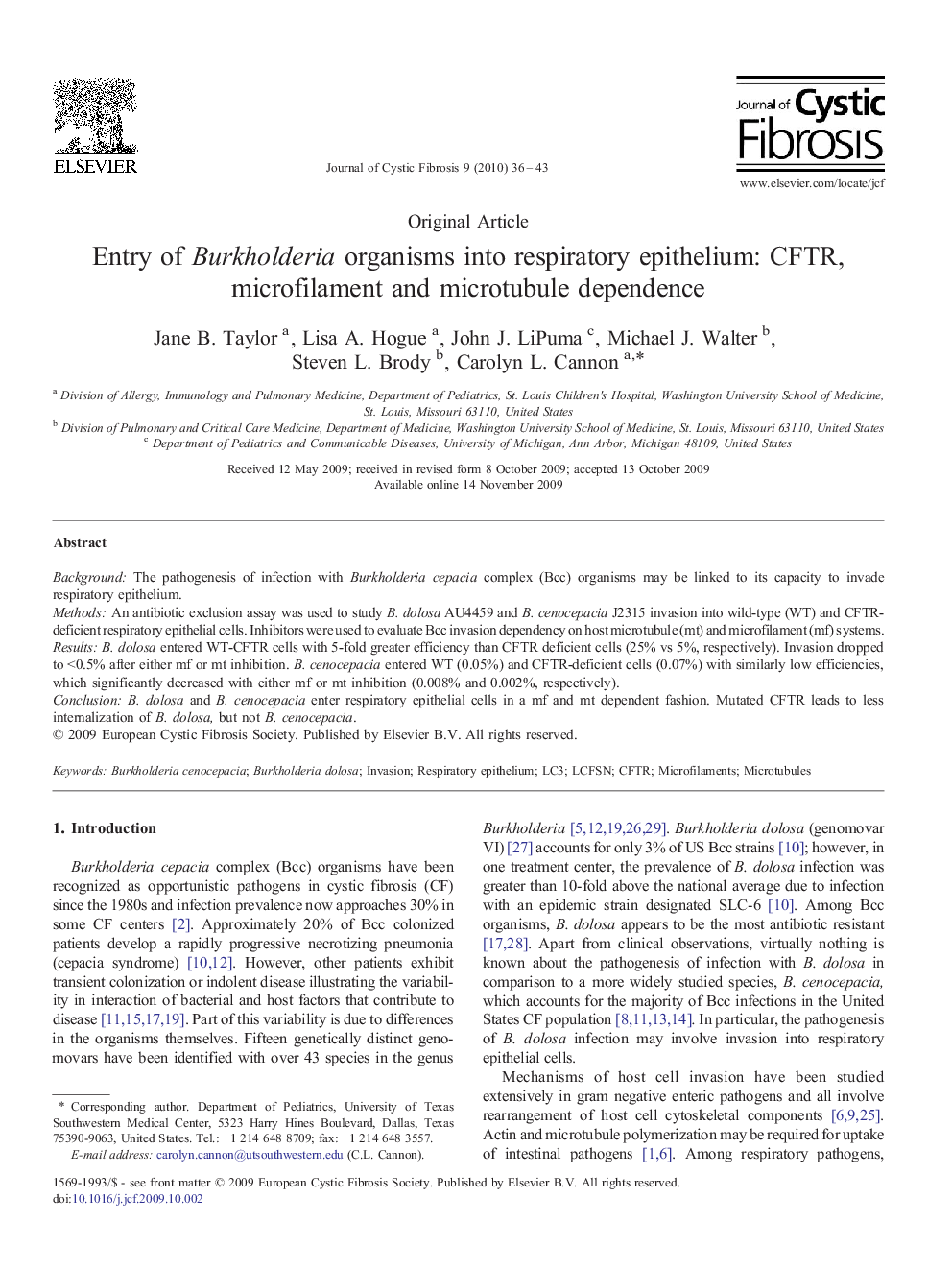| Article ID | Journal | Published Year | Pages | File Type |
|---|---|---|---|---|
| 4209275 | Journal of Cystic Fibrosis | 2010 | 8 Pages |
BackgroundThe pathogenesis of infection with Burkholderia cepacia complex (Bcc) organisms may be linked to its capacity to invade respiratory epithelium.MethodsAn antibiotic exclusion assay was used to study B. dolosa AU4459 and B. cenocepacia J2315 invasion into wild-type (WT) and CFTR-deficient respiratory epithelial cells. Inhibitors were used to evaluate Bcc invasion dependency on host microtubule (mt) and microfilament (mf) systems.ResultsB. dolosa entered WT-CFTR cells with 5-fold greater efficiency than CFTR deficient cells (25% vs 5%, respectively). Invasion dropped to <0.5% after either mf or mt inhibition. B. cenocepacia entered WT (0.05%) and CFTR-deficient cells (0.07%) with similarly low efficiencies, which significantly decreased with either mf or mt inhibition (0.008% and 0.002%, respectively).ConclusionB. dolosa and B. cenocepacia enter respiratory epithelial cells in a mf and mt dependent fashion. Mutated CFTR leads to less internalization of B. dolosa, but not B. cenocepacia.
